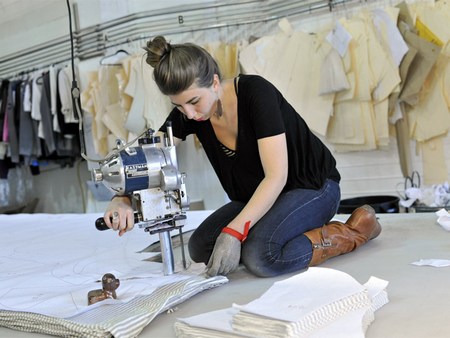Sample | Sample Room | Sample Room Activities
What is a Sample?
Sample garment is very important in the readymade garment business. A sample is that by which any person can understand the production, qualities, and performance of the total garment export order. The sample is made in the sample room according to the buyer’s instructions. It can ensure the garment buyer as well as the customer about the pre and postcondition of the garments ordered. The sample is also used to take the required ideas from the market about the business promotion of that order.
What is Sample Room?

It is the most important section in the readymade garments industry. It is that where design ideas are taken from drawing to the tangible garment. It is that kinds of production room where the required amount of sample (2pcs or 3pcs or more) can be made according to the buyer’s recommendation.
It should be noted here that, the most experienced and well performer employee engaged in the sample room section. The sample room consists of fashion designers, pattern makers, sample pattern cutters, fabric specialists, sample machinists, fit specialists who all are experts in their specific area.
After making the pattern of the garments, it’s laid down onto the required quality of the fabric and cut out the necessary amount of pieces for the particular style. After that, cutting fabric is sent to the sample machinists who complete all kinds of sewing operations by using different types of sewing machines. Finally, a quality controller checks the garments by following the buyer’s recommendation and submit to the garments merchandising department.
Activities of Sample Room:
There are some important activities of every sample section in the garment manufacturing industries which is pointed out below:
- To make the proper sample by following the buyer’s instructions.
- To understand the requirements of the buyer.
- To fulfill the requirements of the buyer.
- To inform the accuracy or confirmation to the buyer that the bulk production is going to be right.
- To confirm the measurement and fabric requirements.
- To make perfection in the pattern and marker.
- To make perfection in fabric consumption.
- To make perfection in the garment costing.
- To utilizes the skill operation with a skilled operator during garment sewing.
- To get understanding completely to the operators and management as well about the upcoming garment production of that order.
- To combine the overall performance of a garment export order.
-Written by
Mayedul Islam
Merchandiser at Fashion Xpress Buying House.
Badda, Dhaka, Bangladesh.
Email: mayedul.islam66@gmail.com

Mayedul Islam is a Founder and Editor of Garments Merchandising. He is an Expert in Garments Merchandising. Writing is his passion. He loves to write articles about Apparel, Textile and Garment Washing specially on Merchandising. Mail him at mayedul.islam66@gmail.com


Hi Can You provide idea about Manufacturing of Disposable Diaper with operation breakdown, Machine required, Type of fabric required.
Excellent weblog here! Additionally your web site loads up very fast!
What web host are you the use of? Can I get your associate link in your host?
I want my web site loaded up as fast as yours lol
knowing more knowledge about merchandising work.technical point
This article is vast essential for any garments merchandiser …….